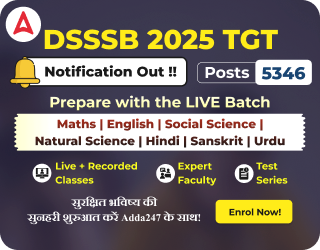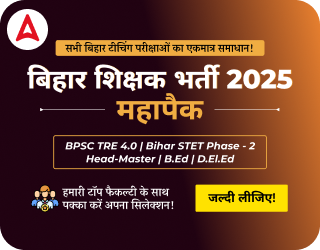Table of Contents
The Central Teacher Eligibility Test (CTET) is no longer just for primary and middle school teachers. As per the latest updates under the National Education Policy (NEP) 2020, CTET is now set to become mandatory for all teaching levels, including Post Graduate Teachers (PGT) who teach Classes 9 to 12. This major shift aims to standardise teacher quality across schools affiliated with CBSE, including Kendriya Vidyalayas, Navodaya Vidyalayas, and other central government institutions.
If you’re planning a career in teaching, these changes directly affect your eligibility and selection process. Let’s break down everything you need to know.
CTET Now Mandatory to Become a Teacher for Classes 9 to 12
Until now, CTET was only required for Primary (PRT) and Trained Graduate Teachers (TGT) teaching up to Class 8. But with the new NEP-aligned framework, CTET will now be mandatory for all categories– PRT, TGT, and PGT, covering the full spectrum of school education from Balvatika (Pre-Primary) to Class 12. Now, teachers aspiring to teach classes 9 to 12 must have a CTET PGT certification to claim eligibility.
This decision was made jointly by the National Council for Teacher Education (NCTE) and the Central Board of Secondary Education (CBSE), with implementation expected in phases, starting as early as the next CTET cycle.
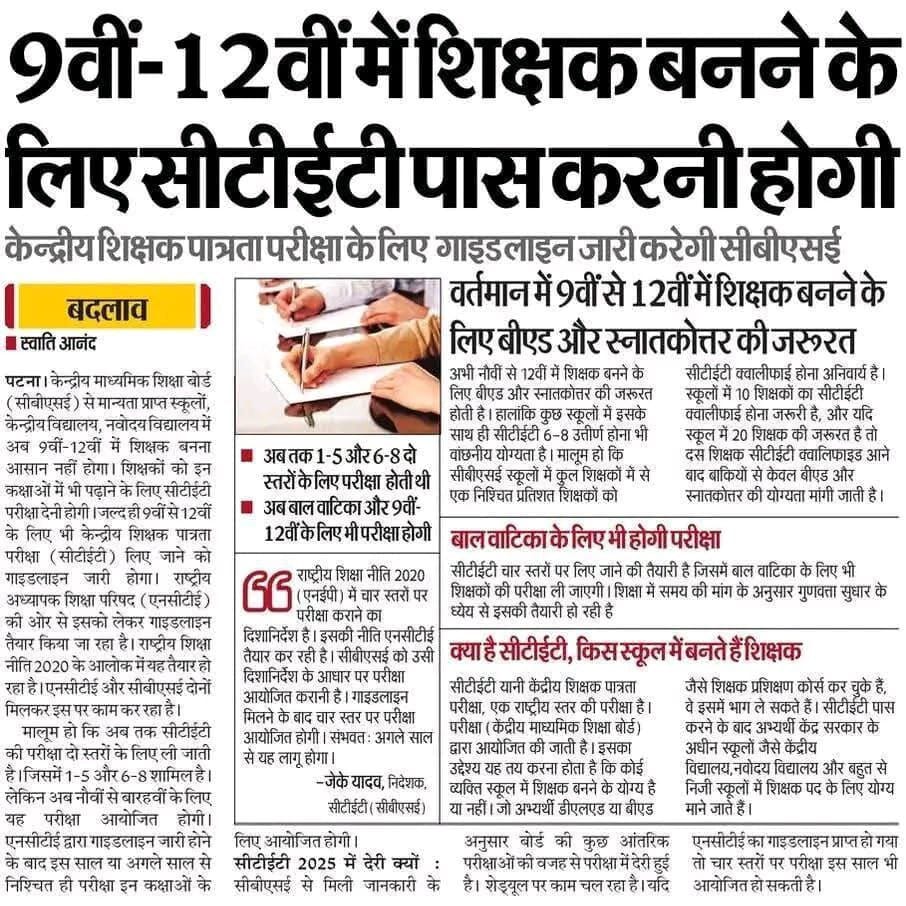
What’s New in the CTET Guidelines?
Here are the key changes introduced in the revised CTET structure:
- CTET will now be conducted in four levels: Pre-Primary (Balvatika), Primary (1- 5), Upper Primary (6- 8), and Senior Secondary (9- 12).
- A separate CTET paper for PGT-level teachers (Classes 9- 12) will be introduced- this is a first in the exam’s history.
- Schools affiliated with CBSE will need a certain minimum percentage of CTET-qualified teachers at all levels.
- These changes are based on the NEP 2020’s 5+3+3+4 school structure and aim to improve teacher quality and accountability.
CTET Certification for PRT, TGT, and PGT
Let’s break down what CTET means for each teaching role as mentioned below.
- PRT (Primary Teacher): CTET Paper I remains the qualifying test. No major changes here.
- TGT (Trained Graduate Teacher): CTET Paper II is still applicable. However, schools will now strictly enforce the CTET qualification during recruitment.
- PGT (Post Graduate Teacher): This is the big update. A new CTET Paper III will be launched for Classes 9 to 12, and qualifying for it will become mandatory for all PGT posts. Earlier, PGT eligibility required just a postgraduate degree and a B.Ed. Now, CTET qualification will also be added to the eligibility criteria, raising the bar for senior secondary teachers.
Why Is CTET Being Made Mandatory for PGTs?
The move aims to ensure consistent teacher quality across all levels of schooling. Previously, there was no national-level eligibility test for senior secondary teachers. With the introduction of CTET for PGTs, students in Classes 9 to 12 will be taught by professionals who have cleared a standardised, government-recognised eligibility exam.
CBSE guidelines already mandate that schools maintain a fixed ratio of CTET-qualified teachers. For example, in a school requiring 20 teachers, at least 10 must have cleared CTET. This requirement will now be extended to include PGTs, further professionalising senior secondary education.
When Will CTET Changes Be Implemented?
The revised CTET structure is expected to roll out in 2025 or early 2026, depending on when the NCTE officially releases the new guidelines. CBSE has confirmed that internal academic schedules and policy updates have caused some delays in the 2025 CTET cycle, but the framework is nearly ready. Once the green light is given, we could see CTET being conducted for all four levels in the very next cycle.
What Is the New Four-Level CTET Structure?
Each level will likely have a dedicated syllabus and paper pattern focusing on pedagogy, subject expertise, and teaching methodology suited to that level. The restructured CTET will align with NEP 2020’s schooling model (5+3+3+4) and include the following levels:
| CTET Level | Target Classes | Role |
| Level 1 (New) | Balvatika (Pre-Primary) | Foundation Teachers |
| Level 2 | Classes 1-5 | Primary Teachers (PRT) |
| Level 3 | Classes 6-8 | Upper Primary (TGT) |
| Level 4 (New) | Classes 9-12 | Senior Secondary (PGT) |
What Should Aspirants Do Now?
If you’re preparing for any central teaching post, start aligning your preparation with the new CTET structure. Whether you’re aiming to become a PRT, TGT, or PGT, CTET is now the essential gateway. Especially for postgraduates planning to apply for PGT roles, it’s crucial to stay updated on the introduction of CTET Paper III, its syllabus, and eligibility requirements. Start preparing early to stay ahead when the official notification drops.
CBSE To Release CTET New Guidelines Soon
The decision to make CTET mandatory for PRT, TGT, and PGT is a landmark reform under NEP 2020. It raises the standard of teacher eligibility and ensures that students across all levels receive quality education from trained and certified educators. Whether you’re just starting or aiming higher in your teaching career, qualifying CTET will now be a non-negotiable part of the journey.




 MPESB Exam Calendar 2026 Out, Check Exam...
MPESB Exam Calendar 2026 Out, Check Exam...
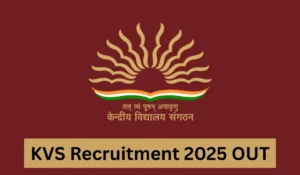 KVS Recruitment 2025 OUT, Check Eligibil...
KVS Recruitment 2025 OUT, Check Eligibil...
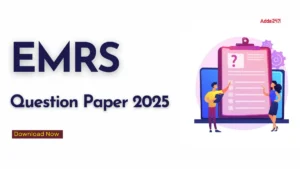 EMRS Question Paper 2025 Released, Downl...
EMRS Question Paper 2025 Released, Downl...



